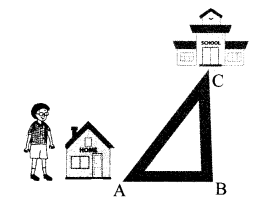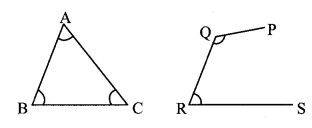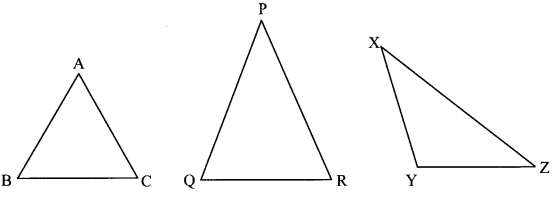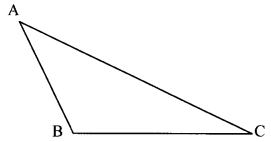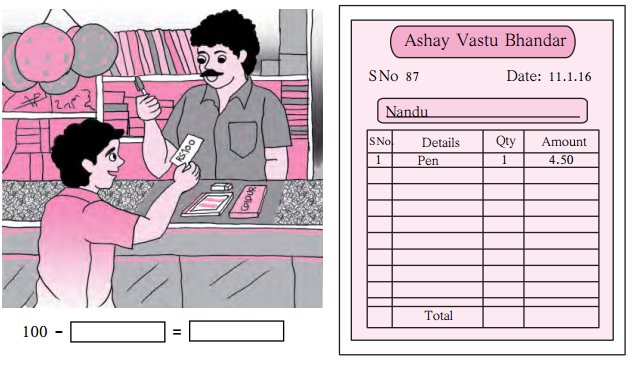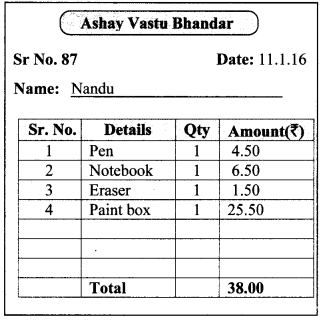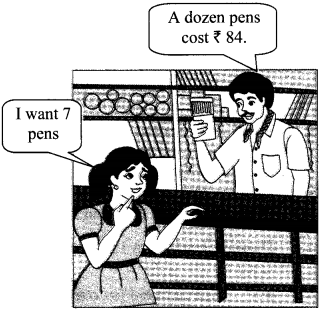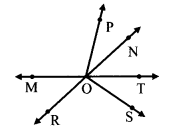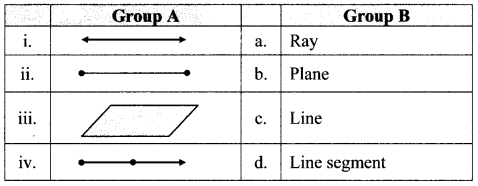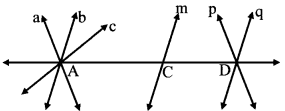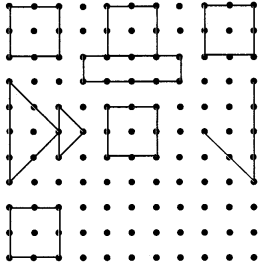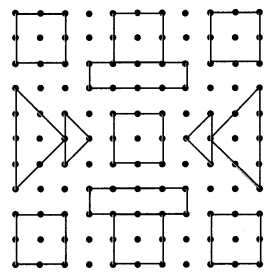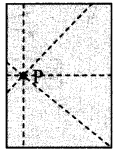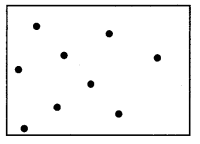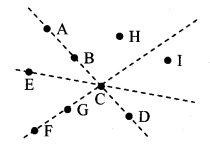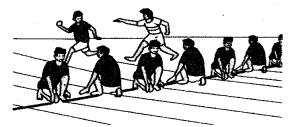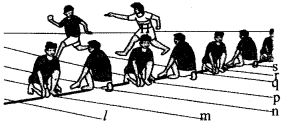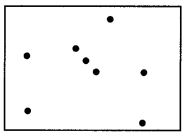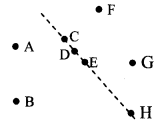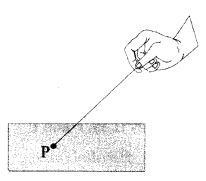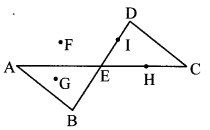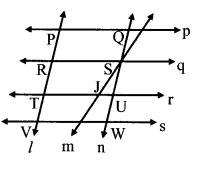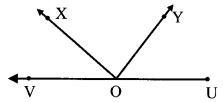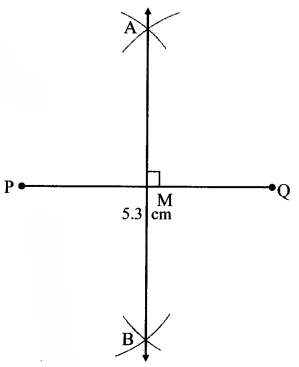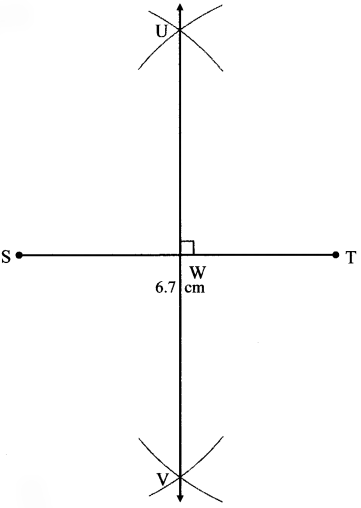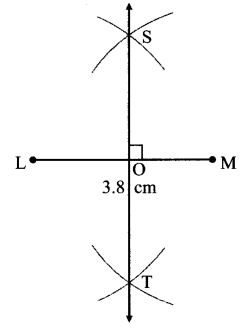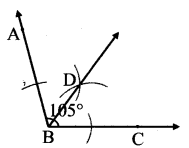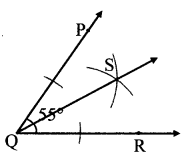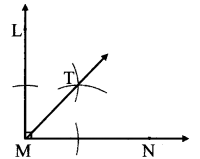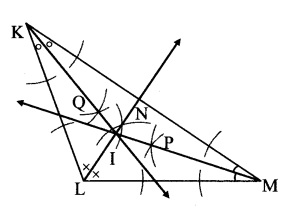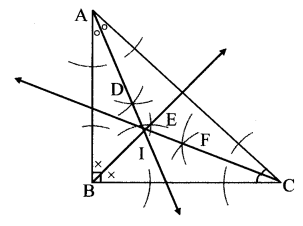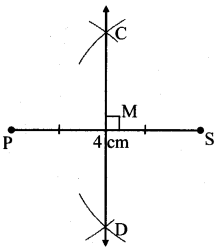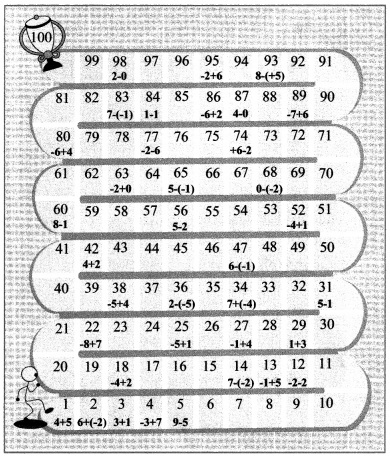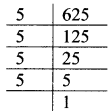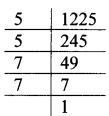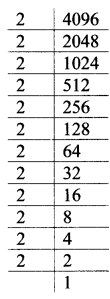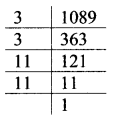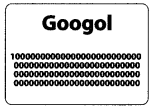Balbharti Maharashtra State Board Class 6 Maths Solutions covers the Std 6 Maths Chapter 10 Equations Class 6 Practice Set 27 Answers Solutions.
6th Standard Maths Practice Set 27 Answers Chapter 10 Equations
Question 1.
Rewrite the following using a letter:
i. The sum of a certain number and 3.
ii. The difference is obtained by subtracting 11 from another number.
iii. The product of 15 and another number.
iv. Four times a number is 24.
Solution:
i. Let the number be x.
∴ x + 3 represents the sum of a certain number x and 3.
ii. Let the number be x.
∴ x – 11 represents the number obtained by subtracting 11 from another number x.
iii. Let the number be x.
∴ 15x represents the product of 15 and another number x.
iv. Let the number be x.
∴ 4x = 24 represents four the product of a number x four times.
Question 2.
Find out which operation must be done on both sides of these equations in order to solve them:
- x + 9 = 11
- x – 4 = 9
- 8x = 24
- \(\frac { x }{ 6 }\) = 3
Solution:
- Subtract 9 from both sides.
- Add 4 to both sides.
- Divide both sides by 8.
- Multiply both sides by 6.
Question 3.
Given below are some equations and the values of the variables. Are these values the solutions to those equations?
| No. | Equation | Value of the Variable | Solution (Yes/No) |
| i. | y – 3 = 11 | y = 3 | No |
| ii. | 17 = n + 7 | n = 10 | |
| iii. | 30 = 5x | x = 6 | |
| iv. | \(\frac { m }{ 2 }\) = 14 | m = 7 |
Solution:
| No. | Equation | Value of the Variable | Solution (Yes/No) |
| i. | y – 3 = 11 | y = 3 | No |
| ii. | 17 = n + 7 | n = 10 | Yes |
| iii. | 30 = 5x | x = 6 | Yes |
| iv. | \(\frac { m }{ 2 }\) = 14 | m = 7 | No |
i. y – 3 = 11
∴ y – 3 + 3 = 11 + 3
…. (Adding 3 to both sides)
∴ y + 0 = 14
∴ y = 14
ii. 17 = n + 7
∴ 17 – 7 = n + 7 – 7
…. (Subtracting 7 from both sides)
∴ 17 + (-7) = n + 7 – 7
∴ 10 = n
∴ n = 10
iii. 30 = 5x
∴ \(\frac{30}{5}=\frac{5x}{5}\)
…. (Dividing both sides by 5)
∴ 6 = 1x
∴ 6 = x
∴ x = 6
iv. \(\frac { m }{ 2 }\) = 14
∴ \(\frac { m }{ 2 }\) × 2 = 14 × 2
…. (Multiplying both sides by 2)
\(\frac { m\times2 }{ 2\times1 }\) = 28
∴ m = 28
Question 4.
Solve the following equations:
i. y – 5 = 1
ii. 8 = t + 5
iii. 4x = 52
iv. 19 = m – 4
v. \(\frac { p }{ 4 }=9\)
vi. x + 10 = 5
vi. m – 5 = -12
vii. p + 4 = -1
Solution:
i. y – 5 = 1
∴y – 5 + 5 = 1 + 5
…. (Adding 5 to both sides)
∴y + 0 = 6
∴y = 6
ii. 8 = t + 5
∴8 – 5 = t + 5 – 5
……(Subtracting 5 from both sides)
∴8 + (-5) = t + 0
∴ 3 = t
∴t = 3
iii. 4x = 52
∴\(\frac{4x}{4}=\frac{52}{4}\)
…. (Dividing both sides by 4)
∴ 1x = 13
∴ x = 13
iv. 19 = m -4
∴ 19 + 4 = m – 4 + 4
…. (Adding 4 to both sides)
∴ 23 = m + 0
∴ m = 23
v. \(\frac { p }{ 4 }\) = 9
∴ \(\frac { p }{ 4 }\) × 4 = 9 × 4 …. (Multiplying both sides by 4)
∴ \(\frac { p\times4 }{ 4\times1 }=36\)
∴ 1p = 36
∴ p = 36
vi. x + 10 = 5
∴ x + 10 – 10 = 5 – 10
…. (Subtracting 10 from both sides)
∴ x + 0 = 5 + (-10)
∴ x = -5
vii. m – 5 = -12
∴m – 5 + 5 = – 12 + 5
…. (Adding 5 to both sides)
∴m + 0 = -7
∴m = -7
viii. p + 4 = – 1
∴p + 4 – 4 = -1 – 4
…. (Subtracting 4 from both sides)
∴p + 0 = (-1) + (-4)
∴P = -5
Question 5.
Write the given information as an equation and find its solution:
i. Haraba owns some sheep. After selling 34 of them in the market, he still has 176 sheep. How many sheep did Haraba have at first?
ii. Sakshi prepared some jam at home and filled it in bottles. After giving away 7 of the bottles to her friends she still has 12 for herself. How many bottles had she made in all? If she filled 250g of jam in each bottle, what was the total weight of the jam she made?
iii. Archana bought some kilograms of wheat. She requires 12 kg per month and she got enough wheat milled for 3 months. After that, she had 14 kg left. How much wheat had Archana bought altogether?
Solution:
i. Let the number of sheep before selling be x.
∴ x – 34 = 176
∴ x – 34 + 34 = 176 + 34 ….(Adding 34 to both sides)
∴ x + 0 = 210
∴ x = 210
The number of sheep with Haraba before selling is 210.
ii. Let the total number of bottles be x.
∴ x – 7 = 12
∴ x – 7 + 7 = 12 + 7 ….(Adding 7 to both sides)
∴ x + 0 = 19
∴ x = 19
Weight of jam in each bottle = 250g
∴ Total weight of jam = 19 × 250g = 4750 g = \(\frac { 4750 }{ 1000 }\)kg = 4.75 kg
∴ The total number of bottles of jam made by Sakshi is 19, and the total weight of jam made is 4.75 kg.
iii. Let the total wheat bought by Archana be x kg.
Wheat used in 1 month = 12 kg
∴ Wheat used in 3 months = 3 × 12 = 36 kg
∴ x – 36 = 14
∴ x – 36 + 36 = 14 + 36 ….(Adding 36 to both sides)
∴ x + 0 = 50
∴ x = 50
∴ The total amount of wheat bought by Archana was 50 kg.


